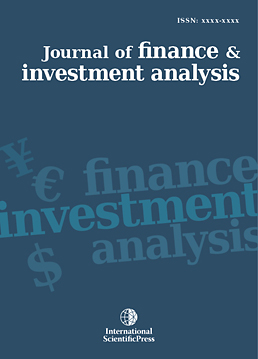Journal of Finance and Investment Analysis
Return and Risk-Return Ratio Based Momentum Strategies: A Fresh Perspective
-
 [ Download ]
[ Download ]
- Times downloaded: 12927
-
Abstract
In this study, we contribute to existing literature on momentum strategies by assessing a modified version of risk-return ratio based security selection criterion in an untested market – the KOSPI 200 over June 2006 to June 2012. Besides conventional risk-return ratios such as the Sharpe ratio, we also employ the use of risk-return ratio based ranking criterion first introduced in Biglova et al. (2004) when ranking securities to form portfolios for these strategies. These ratios take into account the non-normality and kurtosis that are ubiquitous in equity time series returns. In contrast to their approach however, we invert the ordinal ranking of negative risk-return ratios to be consistent with the interpretation of negative ratios presented in Sharpe (1994). Applying these methods, this study quantifies and compares the performance of returns based and risk-return ratio based momentum strategies while estimating the transaction costs involved in implementing such strategies. For return based momentum strategies, we show that most strategies involving a 3 or 6 month formation period exhibit statistically significant positive returns, while those with a 9 or 12 month formation period do not. In addition, all risk-return ratio based strategies failed to generate returns that are significantly greater than zero.
